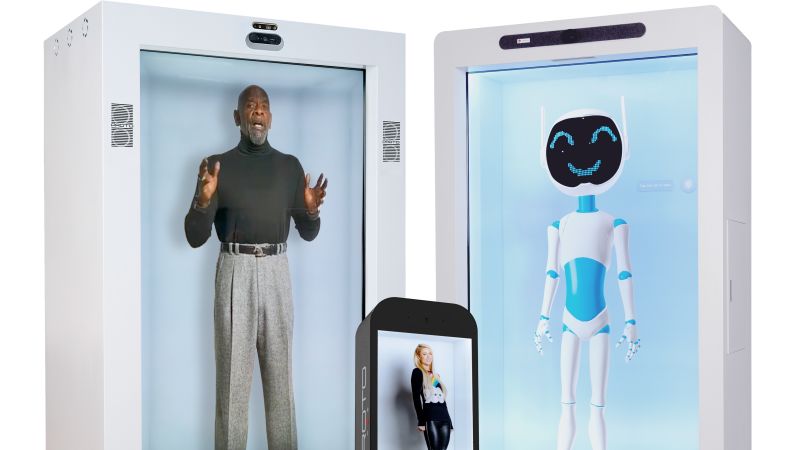Proto is a startup based in the US that offers the world’s “first holographic communications platform” through a box that can display life-size, 3D video of a person. The box, which weighs over 400 pounds and is taller than the average NBA player, creates the illusion of three-dimensionality by using graphical effects such as shadows and reflections. It can show pre-recorded or live-feed video, and any 4K camera, including an iPhone, can be used as the source.
The company, founded by David Nussbaum in 2018, has 45 employees and has sold nearly 1,000 units of its full-size models, the Proto Epic and Proto Luma. The devices start at $29,000 and go up to $65,000, with a more compact tabletop version called the Proto M priced at $5,900. Proto also offers a lease option for the full-sized model at $2,500 a month. Although only one Proto unit is needed to set up a call, Proto-to-Proto communication is not currently supported.
Proto has clients such as Amazon, Verizon, Siemens, Walmart, and major US TV networks. Nussbaum envisions a future where a smaller, more affordable version of the device can be in living rooms for under $1,000. The technology has been used in various settings, including airports, hotels, and universities. Proto has partnered with academic institutions like Central Florida, MIT, and Stanford to beam in guest lecturers from around the world, providing students with a unique and engaging learning experience.
The technology is not limited to Proto, as other companies like Holoconnects and Google are also developing similar holographic display systems. Google’s Project Starline, which offers more immersive video conferencing experiences, and Cisco’s efforts to integrate holograms into their Webex platform are examples of the growing interest in this technology. Proto has been used in healthcare settings, such as the West Cancer Center, allowing doctors to remotely connect with patients, delivering a more immersive and effective healthcare experience.
Patients at the West Cancer Center have reported positive experiences with the holographic technology, noting that it facilitates better communication and engagement in healthcare consultations. Crystal Freeman, a patient, finds the technology more satisfying than traditional virtual visits, particularly for rural patients. Nussbaum also uses the technology to connect his children with their grandparents, emphasizing the emotional connection that holographic communication can provide, even across long distances.
Overall, Proto’s holographic communications platform offers a unique and engaging way to interact remotely, whether in educational, business, or healthcare settings. By creating life-size, 3D representations of individuals, the technology enhances communication and engagement, providing users with a more authentic and immersive experience than traditional video calls. As the technology continues to evolve, holographic communication could become more accessible and widespread, potentially revolutionizing how people connect and collaborate in various scenarios.


